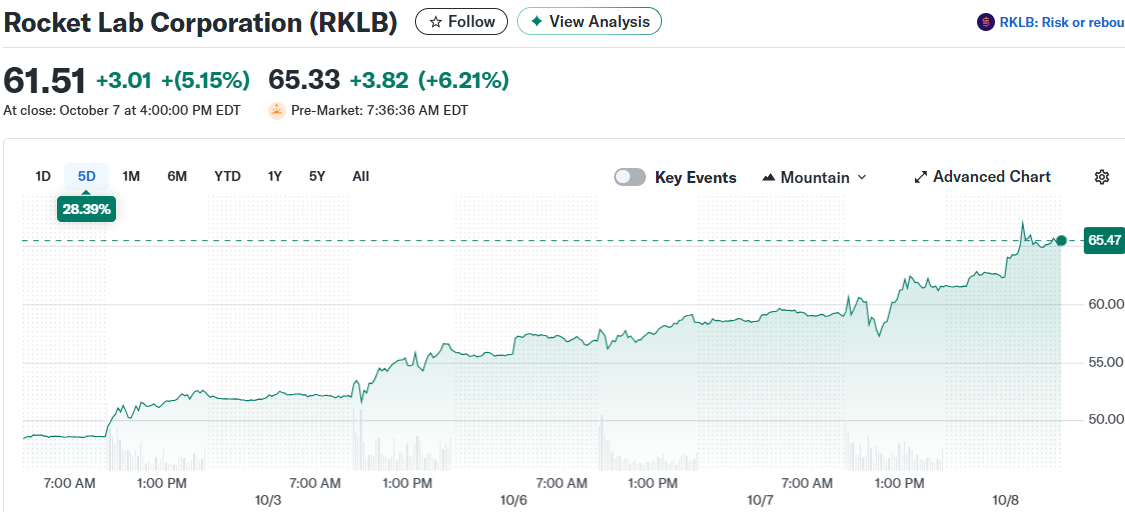TLDR
- Rocket Lab launches Synspective’s seventh StriX satellite October 14 from New Zealand Launch Complex 1
- Mission deploys first next-generation SAR satellite with enhanced Earth observation capabilities
- Company maintains 100% success rate in 2025 with 15th launch, targeting 20+ missions by year-end
- Rocket Lab serves as exclusive launch provider for all 21 planned StriX constellation missions
- Stock has surged 470% over past year with healthy liquidity position
Rocket Lab Corporation will launch the seventh StriX satellite for Synspective on October 14 UTC. The mission lifts off from Launch Complex 1 in New Zealand.

The launch window opens at 16:30 UTC on October 14. That’s 5:30 am NZDT on October 15 in New Zealand and 12:30 pm ET on October 14 in the United States.
The mission, called “Owl New World,” carries the first next-generation Synthetic Aperture Radar satellite. These satellites capture Earth observation data for disaster response, national security, and environmental monitoring.
This marks the seventh launch for the Japanese company. Synspective has contracted 21 total missions with Rocket Lab to complete its constellation by 2030.
Perfect Launch Record Continues
Rocket Lab has achieved 100% mission success across all 2025 launches. This will be the company’s 15th launch this year and 73rd overall.
The company expects to complete more than 20 launches by year-end. The Electron rocket, which carries the StriX satellite, is the world’s most frequently launched commercial small orbital rocket.
Rocket Lab stock has climbed over 470% in the past year. The company maintains a current ratio of 2.67, indicating strong liquidity.
Rocket Lab serves as the exclusive launch provider for the entire StriX constellation. The latest mission fulfills part of a multi-launch agreement for 10 additional dedicated Electron launches.
This represents the largest order of dedicated Electron launches from a single customer. The partnership extends beyond basic launch services into the broader small satellite market.
Next-Generation Satellite Technology
The new StriX satellites feature upgraded technology compared to earlier versions. The improvements enhance data quality and collection capabilities.
Synthetic Aperture Radar technology allows the satellites to capture images in any weather conditions or time of day. The constellation will provide continuous Earth observation data once complete.
Applications include natural disaster monitoring and environmental change tracking. The satellites serve commercial, government, and national security customers.
Rocket Lab recently launched a $750 million at-the-market offering program. Several investment banks serve as sales agents.
The company also delivered two spacecraft to Kennedy Space Center for NASA’s ESCAPADE mission. That mission will study solar wind interactions with Mars’ magnetosphere.
Rocket Lab provides launch services, spacecraft, and satellite components. The company operates Launch Complex 1 as its primary launch facility in New Zealand.
The site provides access to multiple orbital inclinations. This flexibility supports various mission requirements for different customers.
The October 14 launch continues Rocket Lab’s strong performance in 2025. The company maintains its position as a leading small satellite launch provider.
Synspective plans to complete its full Earth-imaging constellation by the end of the decade. The partnership with Rocket Lab remains central to achieving this goal.


